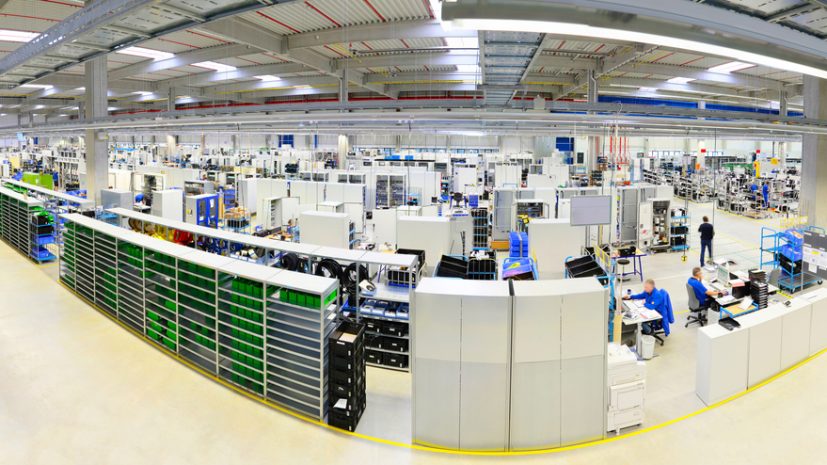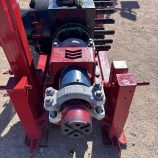Digital Operations: Transforming the Manufacturing Floor

Posted: February 6, 2024
Digital transformation invites oil and gas manufacturers to shift from traditional, manual monitoring and control methods to automated, data-driven solutions and future-ready technologies. This transformation leverages the power of digital operations to boost efficiency and performance, reduce costs, and improve the safety and sustainability of operations.
Moreover, digitized processes can help reduce carbon emissions. This assists companies in realizing sustainable development goals. Amid challenges of market volatility and regulatory pressures, continuous operational improvement and technological advancements are critical for the oil and gas sector to thrive and remain competitive.
Here, we’ll explore how digital operations are transforming manufacturing production—and the benefits of this shift for the entire value chain.
Understanding Digital Operations in Flow Control Manufacturing
Digital operations represent a forward-thinking solution that integrates data, technology, and advanced visualization into operations. Real-time performance insights and data analytics streamline oil and gas operations by automating tasks. This shift allows for precise scheduling and forecasting, minimizing errors and boosting efficiency. It creates an engineering ecosystem where assets can adapt and improve based on historical data, insights gained, and actions implemented.
We at Gilmore attribute our success as a leading provider of flow control solutions to our partnerships, valuable client relationships and investment in operational optimization. By leveraging strategic partnerships in digitalization, automation, and process management, Gilmore continues to improve operational efficiency and performance with the creation of value propositions for our customers.
Benefits of Digital Operations in Manufacturing
Digital transformation offers oil and gas producers a plethora of benefits across the manufacturing timeline.
Let’s start with data-driven flow control designs—a critical aspect of improving profitability, employee safety, and environmental safeguards. Oil and gas operators must manage flow, temperature, pressure, chemical compatibility, erosive media, and other variables to maintain safe production standards.
Gilmore employs technological advancements in flow control components to significantly improve composition and design, extending service life and decreasing operational downtime. By analyzing trends and patterns from collected data and the commitment to lifecycle testing that meets or exceeds API requirements, customers are assured a reliable severe service flow control product. This proactive approach also significantly supports optimization in maintenance schedules.
As a proven flow control technology partner, we uncover which materials best handle pressure, erosion, corrosion, and resist leaking. Our product engineers support material selection and design decisions through field and lab performance data analytics. Additionally, we digitized our product inventory for faster searching, stocking, and organizing. This fosters a lifecycle service and spares stocking program that ensures OEM-certified craftsmanship and spares availability in an unstable supply chain environment. We combine our digitized forecast model, keeping on-demand items in stock, and an economical batch production strategy to ensure better pricing and availability for our customers.
Some further benefits include:
Production Optimization
Data analytics can drive improved efficiencies in manufacturing machining processes to eliminate unnecessary steps with input resources, system programming, tooling alignment, and operator downtime to increase throughput of finished products.
Planning and Procurement Efficiencies
Production optimization generates improved alignment of component shared sourced parts and material providing visibility for more reliable scheduling and purchasing economies of scale. Supplier performance can also then be quantified through data tracking of on-time delivery as well as material quality.
Energy Efficiency, Sustainability, and Regulatory Compliance
Production optimization, intelligent scheduling and procurement allowances provide the ability for multiple orders, reduction in material waste, and shipment consolidation, improving carbon footprint impact.
Reduced Operating Costs
Through the investment in data analytics, core value add with manufacturing software technology, creation of scale and strategic supply chain partnerships, manufacturing operations can become more agile and swiftly adapt to evolving market trends, stakeholder needs, and technological developments. Utilizing tools for business intelligence, optimization, and analytics can enhance decision-making, minimize risk, and reduce downtime—all critical for cost reduction.
Improved Safety
By digitizing operations with integrated business and quality management systems, manufacturing companies can detect anomalies and minimize the number of actions required for specific processes, increasing effectiveness and efficiency in maintaining a safe work environment, free of hazards and ecologically friendly.

How Manufacturing Companies Can Digitize Operations
Digitizing operations has the power to significantly enhance how a company delivers value to customers and functions. The following steps are key for manufacturers aiming to elevate their business with digital operations:
1. Establish a Clear Digital Strategy
Define your digital transformation objectives. This might include increasing efficiency, improving product quality, or enhancing customer experience.
2. Assess Current Capabilities
Analyze the current state of digital technology within the organization, as this will help identify areas where digital technologies are lacking or outdated. At the same time, evaluate your workforce’s digital skills. These assessments will highlight the gaps that need to be filled.
3. Invest in Digital Infrastructure
Upgrade the technological infrastructure to support digital operations. This may include cloud computing resources, advanced sensors, data analytics platforms, and cybersecurity measures.
4. Develop Data Analytics Capabilities
Centralize data collection and employ analytics to gain insights from the data generated by all of the software platforms driving operations throughout the manufacturing process. This will help in making informed decisions, predicting maintenance needs and customizing workflow processes that improve cost and productivity.
5. Enhance Product Design with Digital Tools
Use digital tools such as computer-aided design (CAD) and simulation software to innovate and improve product design. These tools allow for rapid prototyping, testing, and iteration of new flow control devices.
7. Focus on Cybersecurity
Implement strong cybersecurity practices and regularly update them to protect sensitive information and essential operations.
8. Upskill Employees and Foster a Digital Culture
Encourage collaboration, continuous learning, and adaptive thinking among employees to support a smooth transition to digital operations.
Pioneering Progress with Advanced Flow Control
The quality of flow control components directly affects oil and gas production outcomes. Collaborating with a technology partner like Gilmore—a leader in flow control solutions—ensures operators gain robust products designed to withstand extreme conditions and deliver optimal uptime.
With comprehensive manufacturing services, including CNC lathes, mills, and advanced finishing processes, Gilmore guarantees top-tier precision and offers custom flow control components. We welcome the opportunity to partner with operators, contractors, and OEMs in new product developments. Let’s connect.




